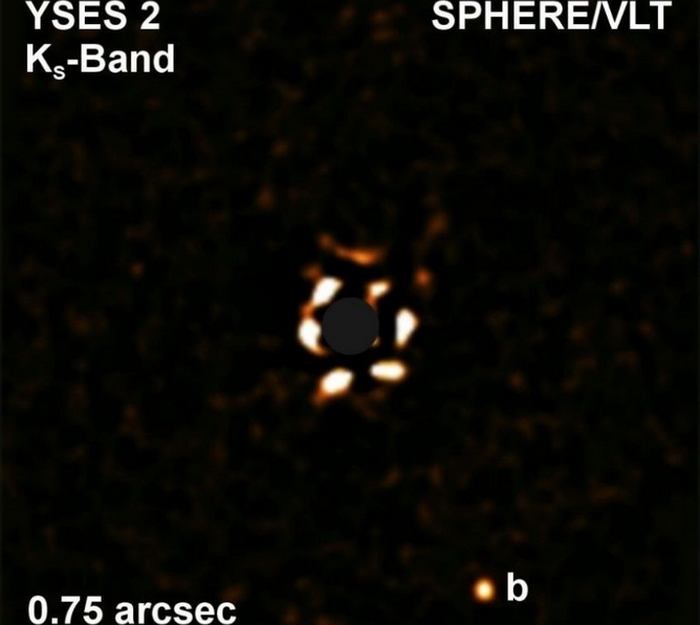Astronomers have published pictures of a giant planet whose existence does not fit into existing theories. Scientists do not yet know how it could have formed. It is about YSES 2b, which is located 360 light years from Earth. The planet was discovered using the world’s largest telescope VLT. Scientists “photographed” it in infrared light.

According to these pictures, giant planet YSES 2b is six times more massive than Jupiter and is 110 times farther from its star than the Earth from the Sun. We add that this system is very young: the exoplanet and its luminary are only 14 million years old. For comparison, the Earth is about 450,000,000 years old. It would seem that there is nothing surprising in these figures. It is the fact that the planet is young, massive and far away from its parent star that made it possible to obtain its infrared image. The same is true of other worlds recorded in this range.
However, the researchers performed detailed calculations and found that YSES 2b is something else. There are two theoretical mechanisms for forming planets at this distance from a star, and both are incompatible with the mass of the newly discovered body. One process would produce a lighter planet than YSES 2b, and the other would produce a massive planet.
Infrared image of the star YSES 2 (top, covered by a dark circle). Bottom right is the planet YSES 2b.
The nucleation of worlds with masses like YSES 2b would be expected closer to the parent star. Perhaps the strange exoplanet did form closer to its sun than it does now. And then some body pulled it over with its gravity. This role could have been played by another massive planet, if it exists in the system of the luminary YSES 2 (so far nothing similar has been found). It is also possible that the exoplanet changed its orbit through the star passing near it. If this planet formed exactly where it is now, then astronomers may have to reconsider their ideas about the formation of planetary systems.
Scientists need more data to understand the history of this amazing system. Especially since the star YSES 2 is similar to the Sun as it was in the distant past, from 14 million years after birth.




